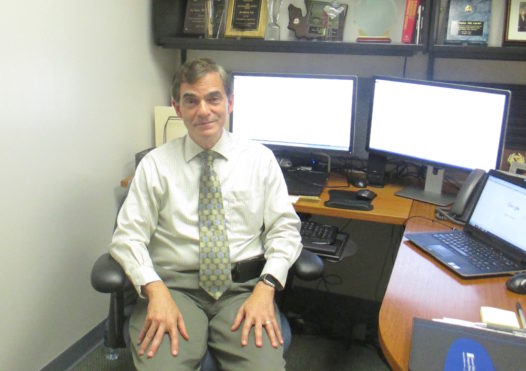
Quickly after the Orlando nightclub shooting, New Orleans physician Dr. Jay Kaplan, president of the American College of Emergency Physicians, flew to Washington, D.C., in an attempt to influence Congress to lift a ban on federal funds to research gun violence. Unfortunately, the trauma physician struck out despite meeting with 48 Democratic lawmakers.
As a physician, Kaplan sees a problem – gun violence – and wants to diagnose the problem so he can solve it, but the research needed to create a plan does not exist.
“Why the lack of solid data? A prime reason is that the National Rifle Association and other influential gun rights advocates have long pressured political leaders to shut down research related to firearms,” according to the May/June 2015 issue of “Mother Jones” magazine.
Twenty years ago, the Dickey Amendment outlawed funding to the Centers for Disease Control and Prevention that might be have been used to “advocate or promote gun control,” eliminating $2.6 million from the firearm injury research program.
“We don’t know what’s going to work and not going to work because we haven’t done the research,” Kaplan says.
In his newly elected role as ACEP president, Kaplan aims to put together a high-threat, emergency care task force to prepare for “battlefield-type” injuries frequently seen in our communities.
Most hospitals have disaster-preparedness plans to deal with car accidents, plane accidents, natural disasters, and chemical exposures, but medical personnel are not ready to handle multiple patients with multiple penetrations like those inflicted by automatic weapons, he said.
Following the Orlando nightclub shooting, eight emergency room physicians made it to the level-one trauma center within an hour, so only 49 people died. Doctors at surrounding hospitals had been on call and were able to arrive within the “golden hour” when lives could still be saved. Otherwise, there might have been many more deaths.
A national registry of gun shot victims could compile data as the basis for research. “We take better care of heart patients because there is a registry,” Kaplan says.
Public health research has helped reduce deaths from car accidents. Speed limits were lowered to reduce impact; parents were required to strap young children into carseats and small children face backwards. Motor cyclists must wear helmets. The same methodology could be applied to gun violence.
Kaplan’s own family was touched by a mass shooting. In 1998, his niece was shot and her best friend killed when a student came to Thurston High School in Oregon with a semiautomatic rifle, firing 50 rounds of ammunition.
“More than 32,000 Americans are killed by guns each year; two-thirds are self-inflicted,” Kaplan says. With multiple mass casualty events in a year, emergency physicians need to become better prepared, he adds.
According to “Mother Jones,” the total cost of gun violence in the United States is about $229 billion per year. The country spends more as a result of gun violence than on obesity and almost as much as the cost of Medicaid.
Victims and their families are not the only ones who pay; we are all paying.
 NOLAbeings Multimedia artist Claire Bangser created NOLAbeings as a portrait-based story project that marries...
NOLAbeings Multimedia artist Claire Bangser created NOLAbeings as a portrait-based story project that marries...  Voodoo in New Orleans: Reviving history: New Orleans fortune telling This article takes a deep dive into the history of Voodoo in New Orleans, its hybridization with Catholicism, and its present-day place in the city's culture. The author visits fortune-tellers in the French Quarter, using their guidance as a tool for introspection rather than a deterministic predictor of the future. Through her experiences in New Orleans, the author feels a mystical connection to both the past and the future.
Voodoo in New Orleans: Reviving history: New Orleans fortune telling This article takes a deep dive into the history of Voodoo in New Orleans, its hybridization with Catholicism, and its present-day place in the city's culture. The author visits fortune-tellers in the French Quarter, using their guidance as a tool for introspection rather than a deterministic predictor of the future. Through her experiences in New Orleans, the author feels a mystical connection to both the past and the future. 